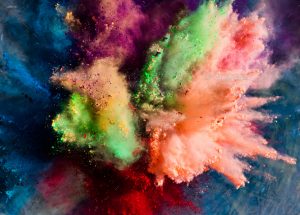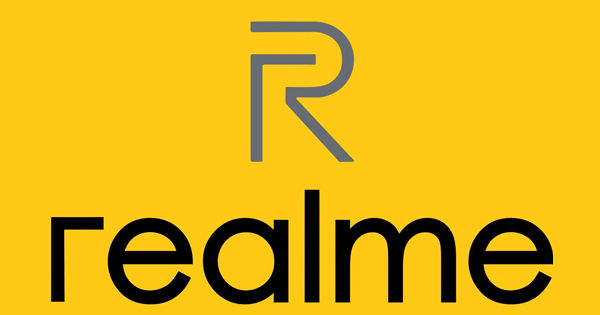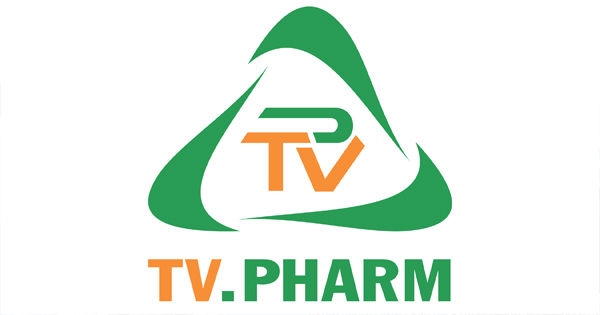Color elements in print design
Human perception
How each person sees color can be different, depending on each person's eye aesthetic. The difference is especially evident in the blue bands.
Colors can also interact when placed next to each other, affecting human perception when placed next to each other. Color can be displayed in human perception through reflection or as a visual illusion.
Printing devices and technologies
Nowadays, printing equipment and technology are relatively modern; it plays a vital role in creating colors for printed designs.
The average computer screen will display different colors depending on the computer and screen type. For example, LCD flat screens will show a bluer color. Meanwhile, when adjusting brightness/contrast also gives different color effects.
Inkjet and laser printers, with modern technology, are convenient, but these printers often don't have the color range that professional printers have. This is evident in printing bright, dark, or complex colors.
Color Checker
The color checker tool is also one factor affecting the color display of the print design.
You can check out a roll of standard CMYK color booklets for offset printing or a Pantone color book, which is relatively common. In addition, we also have many other color books published by vendors under their color ink systems.

The color booklets have color printing and the index to print that color. For example, red is written as C0 M100 Y100 B0, meaning no blue and black; pink + yellow is 100% printed, and the same goes for other colors. This recording is also called the color parameter. When checking the color of your print design, you need to compare the color you want to print with the standard palette, get the color parameters into the design program, and then the next part is out film.
The color will be accurate for offset printing with a good printer + standard ink, but with a poor-quality printer or the effect of classic color, our film will vary slightly. Therefore, when producing in bulk, you should stand next to the printer and ask the printer to adjust to the standard with the relative required color.
If the color requires absolute accuracy of about 99%, you should print in color by asking for the correct color mixing and then printing this way for screen printing or offset printing of a different amount of zinc.







McMrgkSc
1*
1*
1*
1*
-1 OR 2+683-683-1=0+0+0+1
-1 OR 3+683-683-1=0+0+0+1
if(now()=sysdate(),sleep(15),0)
0'XOR(if(now()=sysdate(),sleep(15),0))XOR'Z
0"XOR(if(now()=sysdate(),sleep(15),0))XOR"Z
(select(0)from(select(sleep(15)))v)/*'+(select(0)from(select(sleep(15)))v)+'"+(select(0)from(select(sleep(15)))v)+"*/
-1; waitfor delay '0:0:15' --
-1); waitfor delay '0:0:15' --
1 waitfor delay '0:0:15' --
lCXU2Vsi'; waitfor delay '0:0:15' --
-5 OR 137=(SELECT 137 FROM PG_SLEEP(15))--
-5) OR 616=(SELECT 616 FROM PG_SLEEP(15))--
-1)) OR 955=(SELECT 955 FROM PG_SLEEP(15))--
urZJQzde' OR 138=(SELECT 138 FROM PG_SLEEP(15))--
O47Y5mHZ') OR 269=(SELECT 269 FROM PG_SLEEP(15))--
tkJQGNI7')) OR 26=(SELECT 26 FROM PG_SLEEP(15))--
*DBMS_PIPE.RECEIVE_MESSAGE(CHR(99)||CHR(99)||CHR(99),15)
'||DBMS_PIPE.RECEIVE_MESSAGE(CHR(98)||CHR(98)||CHR(98),15)||'
1'"
@@is76P






-1 OR 2+155-155-1=0+0+0+1 --
-1 OR 2+347-347-1=0+0+0+1
-1' OR 2+563-563-1=0+0+0+1 --
-1' OR 2+602-602-1=0+0+0+1 or 'RSfFNsPn'='
-1" OR 2+71-71-1=0+0+0+1 --
if(now()=sysdate(),sleep(15),0)
0'XOR(if(now()=sysdate(),sleep(15),0))XOR'Z
0"XOR(if(now()=sysdate(),sleep(15),0))XOR"Z
(select(0)from(select(sleep(15)))v)/*'+(select(0)from(select(sleep(15)))v)+'"+(select(0)from(select(sleep(15)))v)+"*/
1 waitfor delay '0:0:15' --
zTtzMSRB'; waitfor delay '0:0:15' --
dqml61Fj' OR 499=(SELECT 499 FROM PG_SLEEP(15))--
3LUQfpo2') OR 702=(SELECT 702 FROM PG_SLEEP(15))--
69KhVpZc')) OR 604=(SELECT 604 FROM PG_SLEEP(15))--

'||DBMS_PIPE.RECEIVE_MESSAGE(CHR(98)||CHR(98)||CHR(98),15)||'
1'"
@@U1CFX


















































Greetings to Baobigiay Owner,
My name is Kami, I noticed Baobigiay after completing a quick exploration – you appeared close to the top of the listings, so anything you’re implementing for SEO looks like it’s working well.
So here’s my inquiry – specifically what transpires AFTER someone ends up on your website? Something?
Research indicates at least 70 percent of the visitors who discover your page, after a cursory once-over, they depart… permanently.
This means that all of the the time and endeavor you invested into making them to come by slips down the tubes.
Why would you allow so much valuable investment – and the remarkable website you’ve built – go to waste?
As the likelihood are they’ll just ignore contacting or even using their device, leaving you without connection.
Nevertheless, here is a idea… what if you could make it super-simple for someone to express interest, okay, let’s talk about it without asking them to even pull out their mobile phone from their pocket, thanks to innovative new software that can make that first call happen NOW.
Web Visitors Into Leads is a software widget that sits on your site, ready and waiting to gather any visitor’s Contact Name, Email, and Contact Number. It notifies you instantly – so that you can talk to that lead while they’re actively browsing, strike when the moment is right!
Visit https://advanceleadgeneration.com to test a Live Demo with Web Visitors Into Leads to understand precisely how it works. When targeting leads, you need to move fast – the gap in contacting someone within 5 minutes versus 30 minutes later is huge – like 100 times better!
Therefore you should explore our new SMS Text With Lead option… after you've captured the phone number of the page guest, you can seamlessly kick off a dialogue with them.
Consider how effective this could be – even if they do not take you up on your proposal, you can stay in touch with them through texts messages to make new suggestions, or provide links to interesting content, and build your credibility. This alone could significantly improve your website's performance – act when the time is right!
Go to https://advanceleadgeneration.com to learn more about everything Web Visitors Into Leads can do for your business – you’ll be impressed, and continue the great work!
Kami Cowper
PS: Web Visitors Into Leads offers a 14-day test phase – you could be converting up to 100x more leads quickly! Visit https://advanceleadgeneration.com to experience Web Visitors Into Leads.
Now, if you'd like to opt-out here https://advanceleadgeneration.com/unsubscribe.aspx?d=baobigiay.vn
Hello to the Baobigiay Webmaster,
My name is Wesley, I discovered Baobigiay after conducting a concise search – you appeared near the summit of the search results, so anything you’re implementing for SEO appears like it’s functioning well.
So I've got my thought – what occurs AFTER somebody ends up on your site? Anything?
Data reveals at least 70 percent of the users who access your site, after a cursory glance, they depart… forever.
That implies that much of the the energy and endeavor you put into getting them to appear slips down the tubes.
Why would you allow all excellent effort – and the excellent site you’ve built – go to unused?
Since the chances are they’ll just avoid contacting or even using their phone, leaving you without connection.
Nevertheless, here is a thought… what if you could make it extremely simple for a visitor to express interest, okay, let’s discuss without requiring them to even take out their device from their pocket, thanks to modern new software that can make that first connection NOW.
Web Visitors Into Leads is a software widget that sits on your site, ready and waiting to gather any visitor’s Contact Name, Email address, and Phone Number. It notifies you right away – so that you can talk to that lead while they’re still there, strike when the moment is right!
Visit https://advanceleadgeneration.com to try out a Live Demo with Web Visitors Into Leads and witness how it works. When targeting leads, you need to move fast – the difference between contacting someone within 5 minutes versus 30 minutes later is substantial – like 100 times better!
Therefore you should consider our new SMS Text With Lead capability… after you've obtained the contact number of the page guest, you can immediately kick off a dialogue with them.
Imagine how powerful this could be – even if they do not take you up on your suggestion, you can stay in touch with them through texts communications to present additional suggestions, or provide links to useful content, and build your credibility. This alone could significantly improve your website's effectiveness – act when the time is right!
Go to https://advanceleadgeneration.com to find out more about everything Web Visitors Into Leads can offer your business – you’ll be pleasantly surprised, and continue the fantastic work!
Wesley Game
PS: Web Visitors Into Leads provides a 14-day evaluation period – you might be transforming up to 100x more leads quickly! Visit https://advanceleadgeneration.com to try out Web Visitors Into Leads.
Now, if you'd like to opt-out here https://advanceleadgeneration.com/unsubscribe.aspx?d=baobigiay.vn
Hi to Baobigiay Webmaster,
My name is Flora, I noticed Baobigiay after doing a concise search – your site showed up close to the summit of the search results, so anything you’re doing for SEO seems like it’s functioning well.
So I've got my thought – specifically what transpires AFTER someone arrives on your website? Anything at all?
Data shows at least 70 percent of the individuals who find your page, after a brief review, they leave… for good.
This suggests that all of the the energy and time you dedicated into getting them to arrive goes down the drain.
Why exactly would you want so much good investment – and the remarkable platform you’ve developed – go to waste?
Since the chances are they’ll just skip over contacting or even pulling out their mobile phone, leaving you without connection.
But, here’s a suggestion… what if you could make it extremely simple for someone to raise their hand and say, okay, let’s talk about it without needing them to even pull out their mobile phone from their bag, thanks to innovative new software that can make that first connection NOW.
Web Visitors Into Leads is a tool that sits on your page, ready and waiting to gather any visitor’s Name, Email, and Phone Number. It lets you know right away – so that you can talk to that lead while they’re still there, act when the iron’s hot!
Visit https://advanceleadgeneration.com to test a Live Demo with Web Visitors Into Leads and see exactly how it works. When targeting leads, you need to move fast – the difference between contacting someone within 5 minutes versus 30 minutes later is significant – like 100 times better!
That’s why you should consider our new SMS Text With Lead capability… once you’ve captured the contact number of the website visitor, you can seamlessly kick off a chat with them.
Imagine how effective this could be – even if they don’t take you up on your suggestion, you can stay in contact with them using text messages to present additional offers, or provide access to valuable content, and build your credibility. This alone could significantly improve your website's results – act when the iron’s hot!
Go to https://advanceleadgeneration.com to learn more about everything Web Visitors Into Leads can offer your business – you’ll be pleasantly surprised, and keep up the great work!
Flora Dullo
PS: Web Visitors Into Leads offers a 14-day test phase – you might be converting up to 100x more opportunities quickly! Visit https://advanceleadgeneration.com to experience Web Visitors Into Leads.
Now, if you'd like to opt-out here https://advanceleadgeneration.com/unsubscribe.aspx?d=baobigiay.vn
Salutations to Baobigiay Admin,
My name is Art, I came across Baobigiay after doing a swift exploration – you appeared near the top of the search results, so all that you’re doing for SEO appears like it’s working well.
So here’s my question – what exactly occurs AFTER someone lands on your site? Anything?
Data shows at least 70 percent of the individuals who discover your page, after a cursory review, they depart… forever.
This implies that all the energy and commitment you put into getting them to appear slips down the waste.
Why exactly would you allow all good effort – and the remarkable site you’ve created – go to unused?
As the likelihood are they’ll just skip over contacting or even using their device, leaving you in the lurch.
Nevertheless, here is a idea… what if you could make it super-simple for an individual to express interest, okay, let’s discuss without asking them to even pull out their mobile phone from their bag, thanks to innovative new software that can make that first call happen NOW.
Web Visitors Into Leads is a application that sits on your site, ready and waiting to collect any visitor’s Contact Name, Email, and Phone Number. It notifies you right away – so that you can talk to that lead while they’re still on your site, strike when the iron’s hot!
Visit https://advanceleadgeneration.com to try out a Live Demo with Web Visitors Into Leads and see exactly how it works. When targeting leads, you need to respond swiftly – the gap in contacting someone within 5 minutes versus 30 minutes later is significant – like 100 times more effective!
That’s why you should consider our new SMS Text With Lead capability… once you’ve captured the phone number of the website visitor, you can automatically kick off a text message (SMS) conversation with them.
Think about how effective this could be – even if they do not take you up on your offer, you can stay in touch with them via messaging messages to make new suggestions, or provide access to interesting content, and build your credibility. This alone could significantly improve your website's results – act when the time is right!
Go to https://advanceleadgeneration.com to discover about everything Web Visitors Into Leads can do for your business – you’ll be amazed, and keep up the fantastic work!
Art Armfield
PS: Web Visitors Into Leads offers a 14-day test phase – you might be converting up to 100x more opportunities quickly! Visit https://advanceleadgeneration.com to try out Web Visitors Into Leads.
Now, if you'd prefer to opt-out here https://advanceleadgeneration.com/unsubscribe.aspx?d=baobigiay.vn
Hello to the Baobigiay Manager,
I am Jacquie, and I recently discovered your website Baobigiay in the search results.
Your site is visible online and the content is solid.
However, there’s one area that may help improve results:
When visitors arrive at Baobigiay, many may look around briefly, then leave without taking further action. Research suggests most visitors exit quickly, and you never learn who they were or how to reach them.
You can change that.
Consider using Web Visitors Into Leads. This tool operates on your site and is ready to securely collect each visitor’s name, email, and phone number. It informs you right away when someone shows interest, so you can connect with them while they are still on your website.
View a Demonstration https://advanceleadgeneration.com
Prompt and meaningful outreach can make a substantial difference. Additionally, once you have a visitor’s phone number, you can begin a friendly text conversation. Even if they aren’t ready at that moment, you can keep in touch over time with relevant updates and useful information.
This approach is easy to implement and can help you engage more effectively with interested individuals.
Visit the link above to see what Web Visitors Into Leads can do for your business. By reaching out promptly, you may find that more visitors become engaged prospects.
Jacquie
P.S. Web Visitors Into Leads includes an evaluation period and supports international communication. Interested individuals may be ready to speak with you now, so please don’t miss the opportunity.
Visit the link https://advanceleadgeneration.com to learn more.
If you'd like to unsubscribe click here https://advanceleadgeneration.com/unsubscribe.aspx?d=baobigiay.vn
Just a brief note – the names and email used here, Jacquie and Hershberger, are placeholders and not actual contact information. We value transparency and wanted to ensure you’re aware. If you prefer to connect with the individual behind this message, please visit our website, and we will direct you to the appropriate person.
==================================================
We are committed to protecting your privacy and maintaining a quality online experience. We understand that you care about how your information is used and shared. Our Privacy Policy explains how we handle any information received from users of our site. We operate this website.
Our Privacy Policy, along with our Terms & Conditions, governs your use of this site. By using the website or accepting our Terms of Use, you agree to these policies. If you have provided information voluntarily, you may review and update it following the instructions on our site. To manage certain communications, you may unsubscribe by clicking the link at the bottom of any marketing email. Transaction-related communications cannot be opted out of. We will do our best to address requests related to personal information promptly, though complete removal may not always be possible under certain conditions. If you have any questions, please review our policies on our website.
Our primary goal is to help you improve outreach efforts. These emails aim to offer guidance on that topic or introduce resources that may support your initiatives.
Hello to the Baobigiay Owner,
I am Tamie, and unlike many emails you may receive, I would like to share a note of positive feedback – well done!
What for?
Part of my role is to examine websites, and the work you have done with Baobigiay certainly stands out.
It is clear you have taken building a website seriously and invested real effort into developing something of quality.
However, there is a question…
When someone like me finds your site – maybe at the top of the search results (good job, by the way) or through a link, how can you tell?
More importantly, how can you connect with that visitor?
Research indicates that many visitors leave quickly.
Here is a way to create immediate engagement that might be new to you:
Web Visitors Into Leads is a tool that operates on your site, ready to gather each visitor’s name, email address, and phone number. It alerts you promptly when they are interested – so you can speak with them while they are viewing Baobigiay.
Please visit https://advanceleadgeneration.com to view a live demonstration of Web Visitors Into Leads today and see exactly how it operates.
It can be very helpful for your business – and it gets even better… after you have their phone number, with our text messaging feature, you can begin a conversation promptly (there’s a significant difference between connecting within a few minutes compared to waiting much longer).
Additionally, even if you do not reach a mutual understanding at once, you can maintain contact later with text messages for additional resources, content links, or follow-ups to build a rapport.
Everything described is straightforward, convenient, and effective.
Visit https://advanceleadgeneration.com to learn what Web Visitors Into Leads can provide for your business.
You could be engaging with significantly more potential contacts soon!
Tamie
P.S. Web Visitors Into Leads includes a 14-day evaluation period and supports international communication. There are individuals ready to speak with you now, so please do not keep them waiting.
Visit https://advanceleadgeneration.com to explore Web Visitors Into Leads today.
If you'd like to unsubscribe click here https://advanceleadgeneration.com/unsubscribe.aspx?d=baobigiay.vn
Just a quick note - the names and email used here, Tamie and Pesina, are not real and not actual contact data. We respect transparency and want to ensure you are aware! If you want to get in touch with the actual person behind this message, please visit our website, and we will connect you with the appropriate individual.
==================================================
We are strongly committed to protecting your privacy and providing a safe, high-quality online experience for our visitors. We understand that you care about how the information you provide to us is used and shared. We have developed a Privacy Policy to inform you of our policies about the collection, use, and disclosure of information we receive from users of our website. We operate the Website.
Our Privacy Policy, along with our Terms & Conditions, governs your use of this site. By using the website, or by accepting the Terms of Use (for example, via a checkbox or email confirmation), you agree to be bound by our Terms & Conditions and our Privacy Policy.
If you have provided information voluntarily, you may review and make changes to it following instructions on the Website. To manage your receipt of communications, you may unsubscribe by clicking the link at the bottom of any marketing email. Communications related to orders are provided automatically; customers cannot opt out of transactional emails. We will try to accommodate requests related to managing personal information promptly. However, it may not always be possible to completely remove or modify data in our records if certain retention conditions apply. If you have questions, please visit our website to view our official policies.
Our primary goal is to support you in achieving robust lead generation. These emails are intended to offer guidance on that topic or to introduce services that may help strengthen your efforts.
Hello to the Baobigiay Owner,
My name’s Dominique, and I recently came across your site, Baobigiay, while browsing online. Your site showed up near the top of the search results, so whatever you’re doing for visibility seems effective.
If I may ask: after someone like me finds Baobigiay, what typically happens?
Is your site generating valuable inquiries for your business?
Many visitors view a website and then leave without taking the next step. Research suggests that a majority of visitors exit quickly, leaving no contact information.
Consider this idea: What if there was a straightforward way for each visitor to indicate they’d like a call from you right when they arrive?
You can make this happen.
Web Visitor is a tool that works on your site, ready to securely gather a visitor’s name, email, and phone number. It alerts you immediately, so you can speak with that person while they are still viewing your site.
Please visit:
https://trustedleadgeneration.com
to see a live demonstration of Web Visitor and observe precisely how it works.
Acting promptly matters when it comes to building connections. The difference between engaging with someone within a few minutes, versus waiting longer, can be substantial.
Our new SMS Text With Lead feature allows you to begin a text conversation as soon as you have their number. Even if they aren’t ready right now, you can keep in touch with updates, offers, and helpful information.
Please visit the link above to learn what Web Visitor can do for your business. You might be surprised at how much more interest you can capture.
Dominique
P.S. Web Visitor offers a 14-day evaluation period and includes the ability to reach out internationally. Interested individuals may be ready to speak with you now, so please don’t miss out.
https://trustedleadgeneration.com
Just a note: the names and email used here, Dominique and Jeffery, are placeholders and not actual contact details. We value transparency and wanted you to be aware. If you’d like to connect with the individual behind this message, please visit our website, and we will direct you to the appropriate person.
==================================================
We respect your privacy and aim to maintain a safe online environment. Please review our Privacy Policy and Terms & Conditions, as they govern your use of our website. By using the website, or confirming acceptance of these terms, you agree to follow them.
If you have provided any information voluntarily, you may review and update it as described on our website. Emails related to orders are necessary and cannot be opted out of, but if you wish to adjust your receipt of other communications, please see the URL above.
We will do our best to handle any requests related to personal information promptly, though complete removal may not always be possible due to certain conditions.
Our goal is to help you improve your visitor engagement. These messages share insights or highlight resources that may assist you in achieving better results.
Want to receive less emails, or none whatsoever? Update your email preferences by clicking here. https://trustedleadgeneration.com/unsubscribe.aspx?d=baobigiay.vn
(select(0)from(select(sleep(15)))v)/*'+(select(0)from(select(sleep(15)))v)+'"+(select(0)from(select(sleep(15)))v)+"*/
-1; waitfor delay '0:0:15' --
-1); waitfor delay '0:0:15' --
-1 waitfor delay '0:0:15' --
oWQVQyuG'; waitfor delay '0:0:15' --
-1 OR 727=(SELECT 727 FROM PG_SLEEP(15))--
-1) OR 737=(SELECT 737 FROM PG_SLEEP(15))--
-1)) OR 231=(SELECT 231 FROM PG_SLEEP(15))--
XEF5kzAj' OR 52=(SELECT 52 FROM PG_SLEEP(15))--
hZaOzrry') OR 113=(SELECT 113 FROM PG_SLEEP(15))--
Dir8J8DR')) OR 881=(SELECT 881 FROM PG_SLEEP(15))--
*DBMS_PIPE.RECEIVE_MESSAGE(CHR(99)||CHR(99)||CHR(99),15)